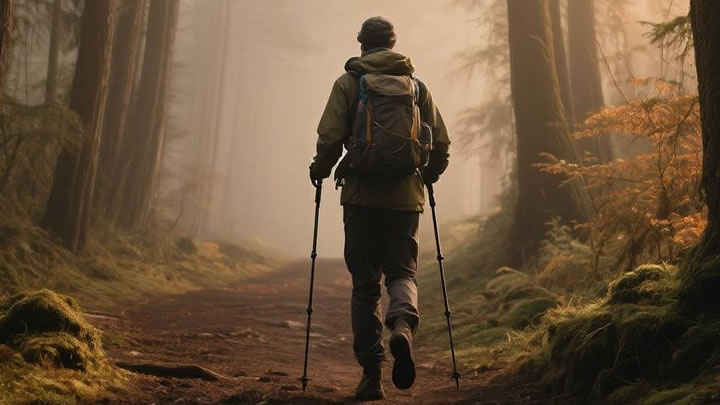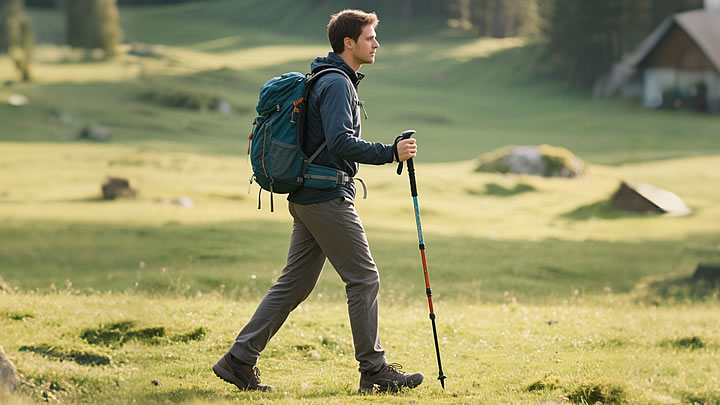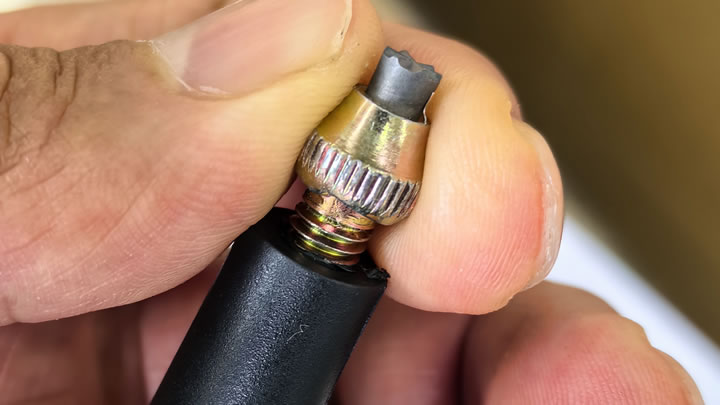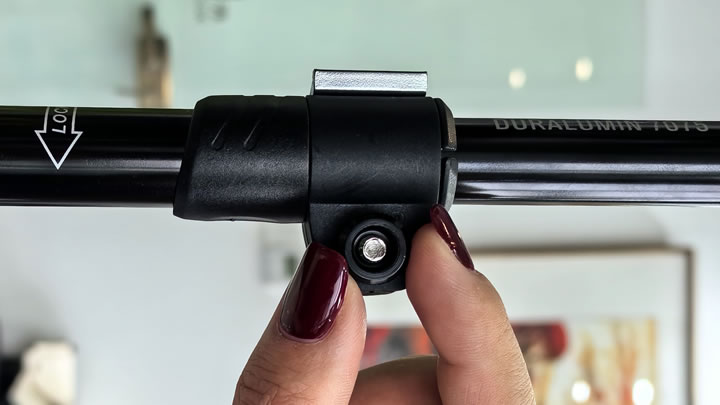Walking Poles for Fishing and Photography: The Ultimate Multi-Purpose Outdoor Tool
For outdoor enthusiasts who enjoy both capturing stunning landscapes and casting a line in remote streams, walking poles have evolved beyond mere hiking aids into sophisticated multi-functional tools. When chosen correctly, a single pair of poles can serve as your stability system on the trail, camera stabilization equipment, and fishing support system—all while significantly reducing the gear you need to carry. This comprehensive guide explores how to select and use walking poles specifically for these dual passions.
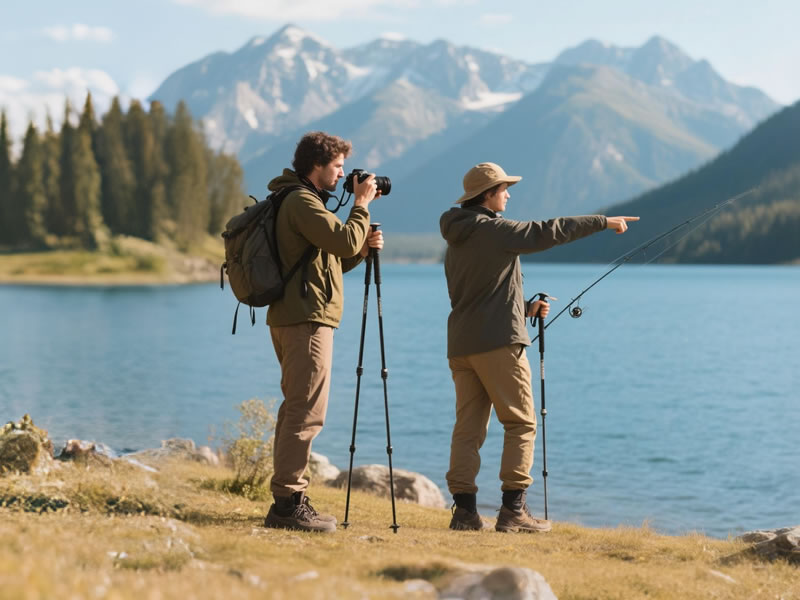
The Photography Advantage: From Hiking Aid to Camera Stabilizer
For photographers, the journey to the perfect shot often involves navigating uneven terrain with expensive equipment. Walking poles address several key challenges:
- Instant Monopod Conversion:Many modern walking poles feature a standard 1/4"-20 camera thread either built into the handle or available as an accessory. With a simple twist, your walking pole transforms into a sturdy monopod capable of supporting DSLRs, mirrorless cameras, or even spotting scopes. This is invaluable for:Low-light photography requiring slower shutter speedsLong exposure shots of waterfalls or night skiesWildlife photography where minimal movement is crucialVideo recording for smooth, stable footage
- Improved Stability in Challenging Conditions:Even without converting to a full monopod, poles provide essential stability when shooting:In strong winds that would normally cause camera shakeOn slippery or uneven surfaces where standing still is difficultWhen shooting from awkward angles or elevations
- Specialized Photography Accessories:Brands like LEKI and Black Diamond offer specialized camera mounts that provide:360-degree panning capabilitiesQuick-release plates for rapid camera deploymentAdditional vibration dampening systems
The Angler's Edge: Stability and Utility on the Water
For fishermen, accessing prime fishing spots often means navigating treacherous riverbanks, slippery rocks, and unstable shorelines. Walking poles become indispensable for:
- Enhanced Water Safety:Test water depth and bottom composition before stepping inProvide crucial stability in moving currentServe as a brace when crossing slippery stream beds
- Hands-Free Fishing Setup:With simple modifications, your walking pole can become:A rod holder when waiting for bitesA support system for tenkara or traditional fly rodsA measuring tool for caught fish (some anglers add measurement markings)
- Accessory Integration:Look for poles with features that benefit anglers:Extended foam grips for comfortable use when wetCorrosion-resistant components (aluminum preferred over steel)Secure locking mechanisms that won't fail in water
Choosing the Right Multi-Purpose Poles
When selecting poles for fishing and photography, prioritize these features:
Material Considerations:
- Aluminum: Generally preferred for fishing due to better corrosion resistance and durability when frequently exposed to water
- Carbon Fiber: Excellent for photography-focused use where weight savings and vibration dampening are priorities
Essential Features:
- Integrated Camera Mount: The most crucial feature for photographers
- Water-Resistant Locks: Flick-lock systems typically handle water exposure better than twist-locks
- Comfortable Wet Grips: Cork or extended foam grips that provide security when wet
- Durable Tips: Interchangeable tips for different terrains—carbide for trails, rubber for slippery rocks
Recommended Models and Systems
LEKI Photon FX Super: Features an integrated camera thread and reliable locking system, suitable for both photography and general outdoor use.
Black Diamond Trail Back: While requiring an optional camera mount, these poles offer excellent durability for rough fishing conditions.
Komperdell Power Lock: Known for their secure locking system and variety of compatible accessories.
Practical Field Techniques
For Photographers:
- Master the "human tripod" stance: Plant both poles slightly forward and lean into them for maximum stability
- Use the pole strap to create additional tension and stability
- Always carry a quick-release plate pre-attached to your camera
For Anglers:
- Use a two-pole system: one for stability while standing, another adapted as a rod rest
- Add bright tape to pole shafts for increased visibility in low light conditions
- Practice setting up your pole quickly with cold, wet hands
Accessory Recommendations
- Universal Camera Mount Adapters: Available for most pole brands
- Rubber Tip Protectors: Essential for silent movement and better grip on rocks
- Custom Length Markings: Add measurement indicators to your poles
- Floating Straps: Prevent poles from sinking if dropped in water
Safety and Maintenance Considerations
- Regularly inspect camera threads for wear and corrosion
- Rinse poles with fresh water after exposure to saltwater
- Check locking mechanisms for grit or sand before important shoots or fishing trips
- Always have a backup plan—don't rely solely on poles for critical support
Conclusion: The Ultimate Outdoor Companion
Walking poles designed for fishing and photography represent the pinnacle of multi-functional outdoor gear. By carefully selecting poles with the right features and learning to use them effectively in both roles, outdoor enthusiasts can significantly enhance their experience while reducing their overall gear load. Whether you're steadying a thousand-dollar camera lens for the perfect sunset shot or maintaining balance while casting into a promising pool, the right walking poles can transform from simple walking aids into essential tools that expand your creative and recreational possibilities in the great outdoors.
The investment in quality multi-purpose poles pays dividends in safety, stability, and the ability to capture those perfect moments—both through the lens and at the end of your fishing line.

